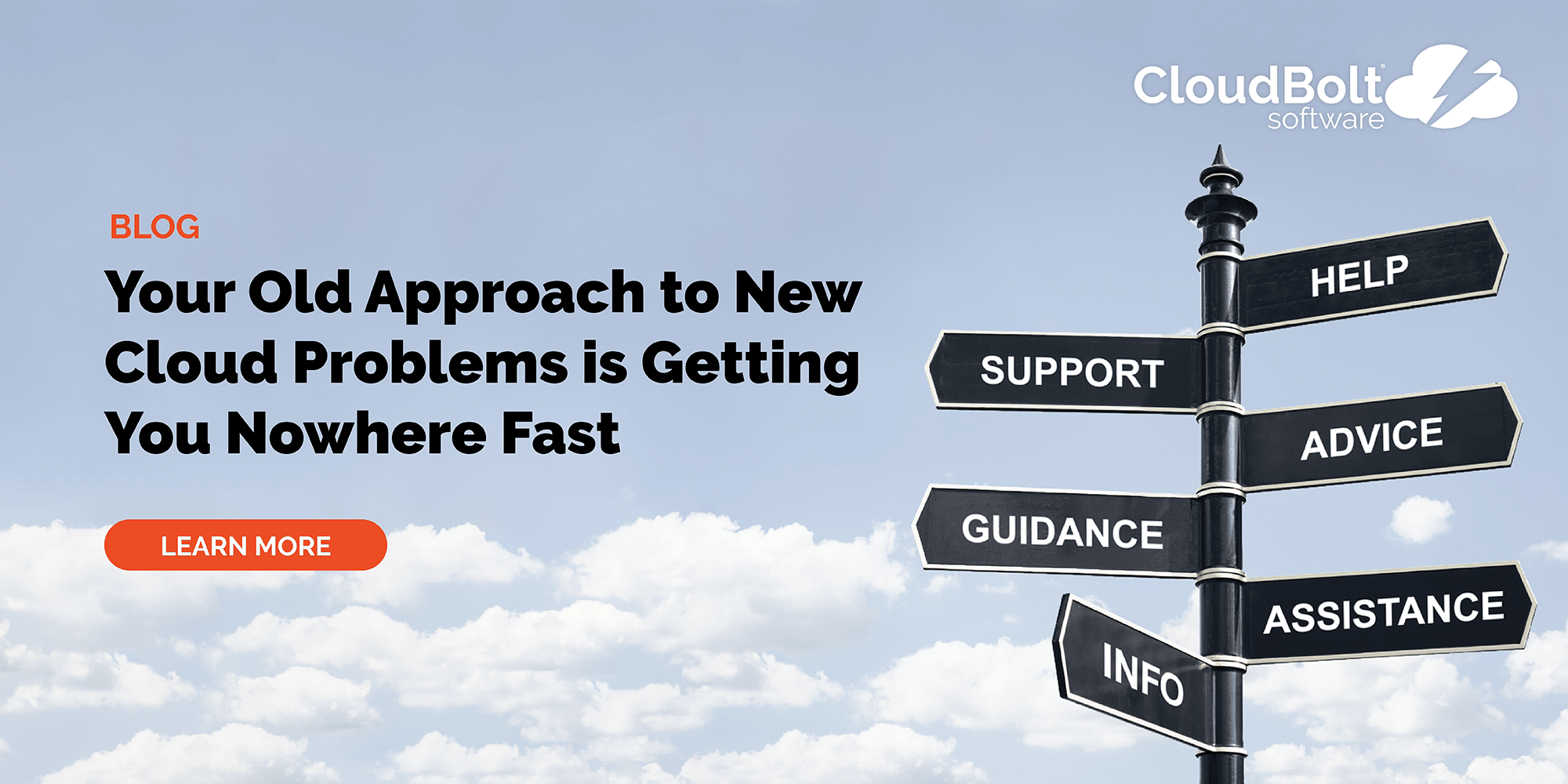Your Old Approach to New Cloud Problems is Getting You Nowhere Fast

It was easier in the past…
Infrastructure delivery 10 years ago looked a lot different than today (heck, it likely looks a lot different today than just a couple of years ago). On-prem was easy to track & budget, and as we introduced elastic cloud computing, we could handle tracking infrastructure usage, reporting, showing/chargeback, and improving processes.
Even as we adopted more advanced technology, integrated more systems, and automated more processes while using more and more single cloud services, things for the most part stayed under control. We hired people. We used native tools. We bought business reporting & intelligence tools to give us new insights.
But then…
Adding more & more over time weighs the organization down…
Over time we kept adding more cloud services, more new technologies, more new tools, and added a 2nd or even 3rd public cloud to the mix, all thinking we were moving faster, figuring out a better way. But doing this eventually creates exponentially higher degrees of complexity that break 1st Generation tools. (See RESEARCH SHOWS – 79% Are Hitting a Wall Using Existing Tools & Platforms). 1st Gen Cloud Management Platforms (CMPs) and Cost Management & Optimization tools simply fall short in this more complex multi-cloud, multi-tool world we now live in.
We try to mask issues by hiring more people (analysts & admins) to cover more significant and greater complexity caused by more usage, more clouds, more tools, ….just more of everything!!! Some call this Technical Debt. Call it what you want but it’s the boat most are in today.
Not enough people & time…
Many of you have gotten to this point:
- Not enough people available – to keep throwing bodies at the problem, it doesn’t scale
- Native tools aren’t multi-cloud – Great when we were single cloud
- 1st-gen solutions don’t go far enough – Often good at AWS, but not so great at multi-cloud
- 1st -gen tools have inaccuracies and the time to get data is unacceptable
- Reporting functions are limited – Often not flexible, leaving stakeholders wanting more
- You use a host of disparate tools or manual processes for provisioning, integration, cost tracking and reporting, cloud security, compliance, infrastructure testing, etc.
The lift is too great to ask people to keep writing endless scripts, aggregating data in spreadsheets, and manually generating usage reports & areas to save.
New approach needed – We live in a new world with new problems and challenges…
- Multi-cloud cost views are difficult and require work….aggregate, report, display, etc..
- Automating processes among varying and disparate systems is not easy….there are more tools and clouds than ever before (Terraform, Ansible, Kubernetes…added to Puppet, Chef, Jenkins, Docker, etc. and I’m just listing the Dev tools)
- Securing the organization from easy cloud access, multi-tool complexity, and manual error-prone processes
- Ensuring governance is applied every time – Guardrails to keep users from getting into trouble
It’s time to redefine what MORE means…
The new cloud world requires new tools. Stop trying to fit a square peg in a round hole, seek solutions that bring more integration capabilities (so they can work with existing tools & automate larger activities), more flexibility to approach issues in different ways (more easily adapt to YOUR process than vendor’s), and more current and differentiated capabilities. For example:
- Build governance into an integration, workload, or process (Remain in control)
- Share and re-use goodness with Content Library (Higher efficiency and productivity)
- Testing infrastructure before using it (Save time)
- Identify anomalies and suggest optimal improvements via machine learning (Continual improvement)
A decade in the grand scheme of things is not a long period of time. But in cloud computing, it’s an eternity. Companies need to resist the pull of inertia that has many accepting the limitations of technologies (and resulting processes) that were never designed to solve the multi-layered cloud complexities of today. The future belongs to the flexible – flexibility to integrate, automate and orchestrate while optimizing costs and ensuring governance. In the near future, there will be a stark difference between the enterprises and service providers who make the pivot rapidly and those who don’t.
The only question left is which do you want to be?
Related Blogs

The Future of Cloud Cost Management and Optimization is Here with CloudBolt
It’s an exciting time to be in the Cloud Cost Management and Optimization space. The landscape is quickly changing as…

